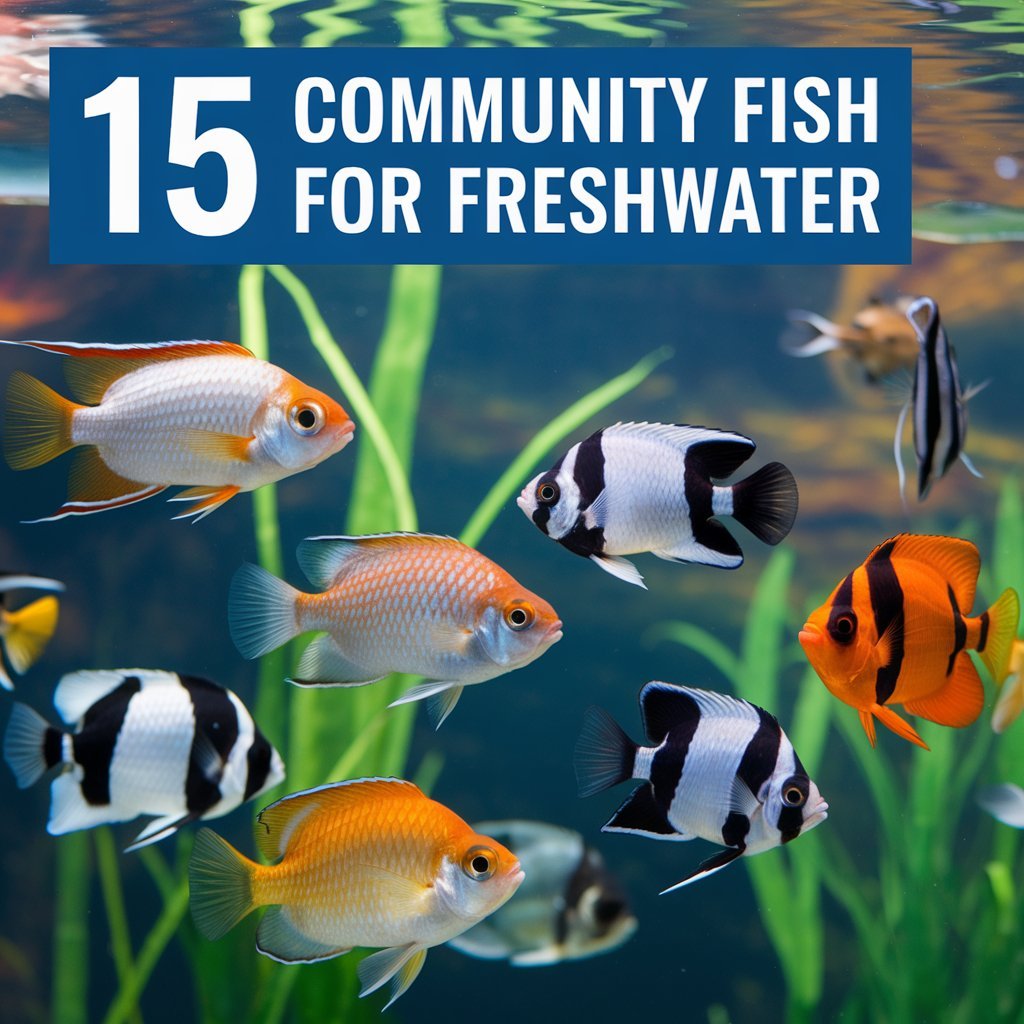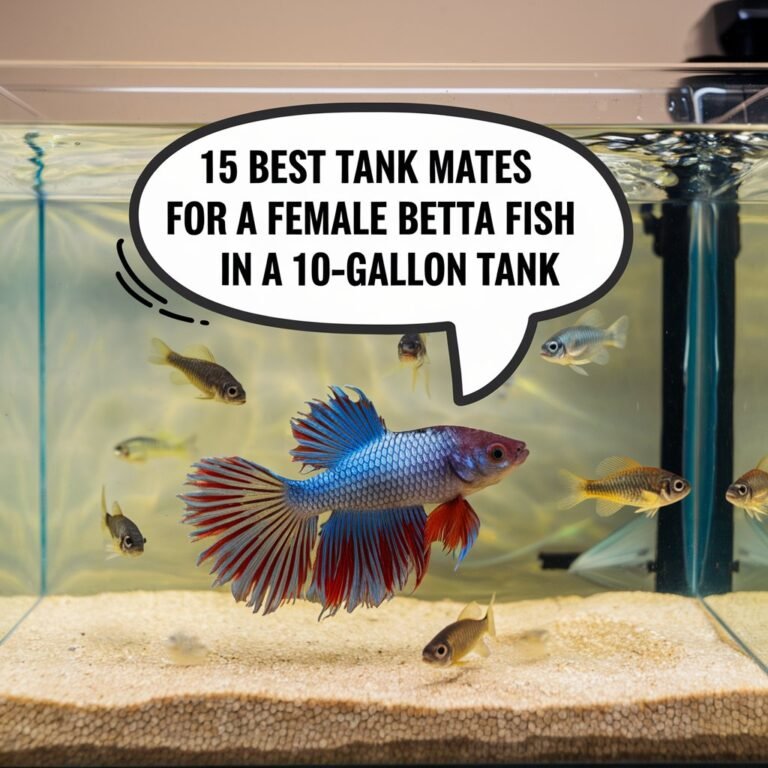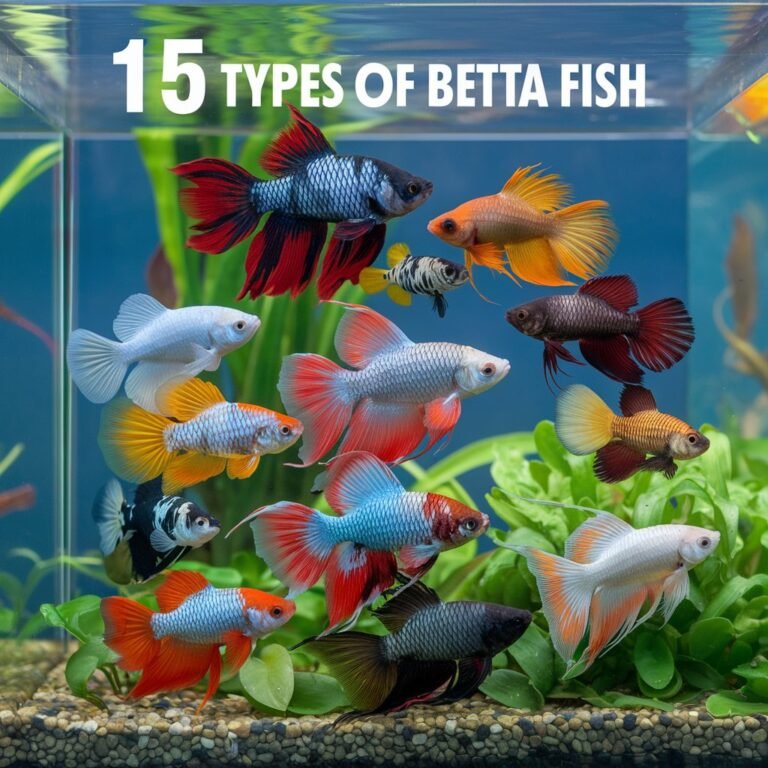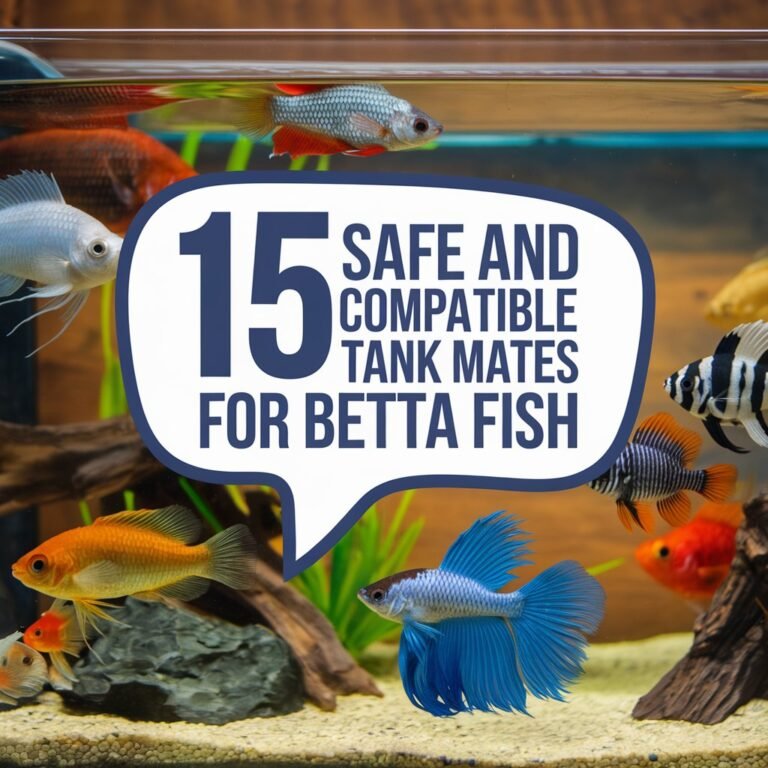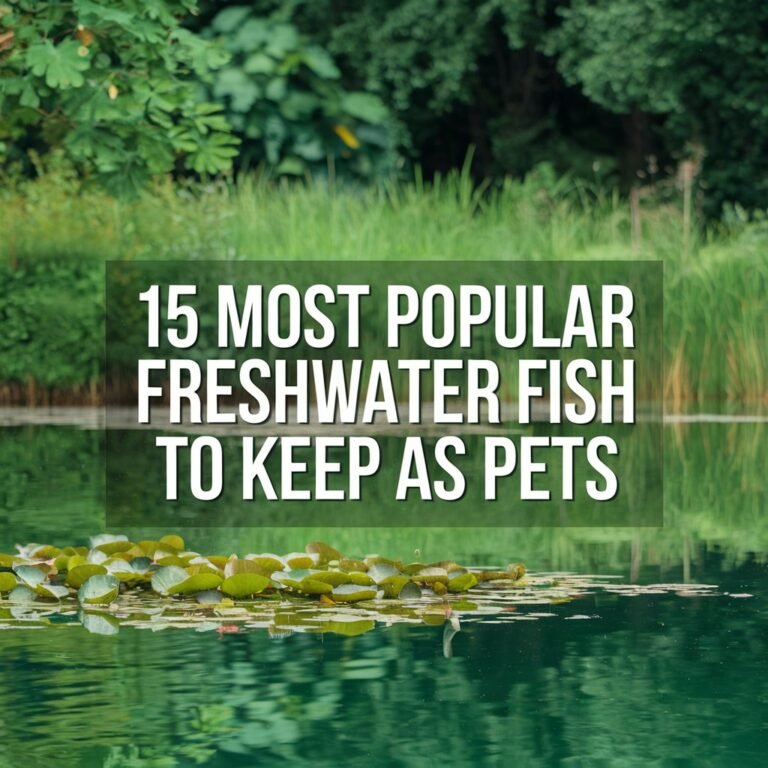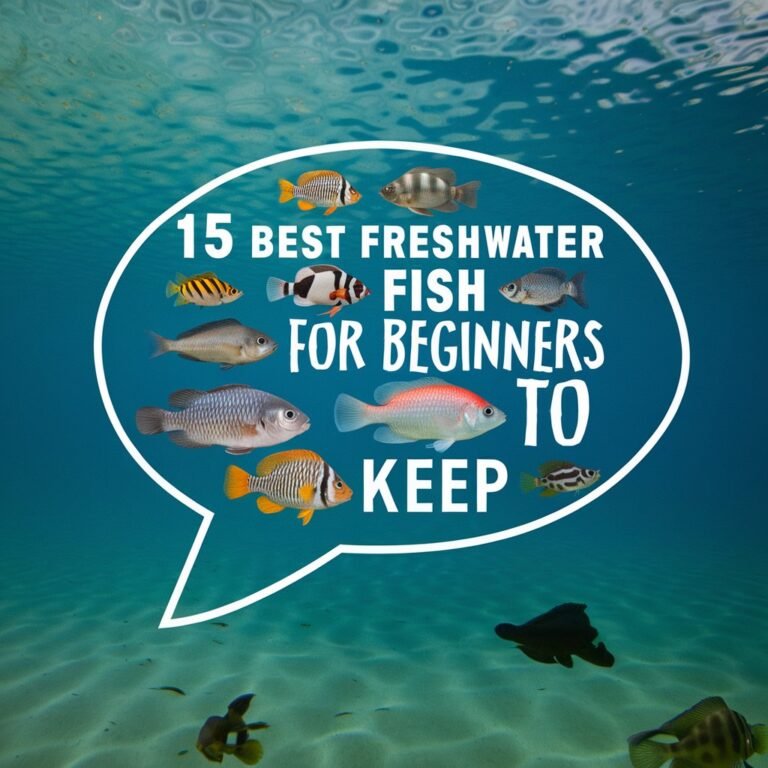15 Community Fish for Freshwater: Harmony in the Tank
When setting up a freshwater aquarium, you’re likely aiming to create a vibrant and harmonious environment. Choosing the right community fish is key to achieving this goal. You’ll want to select species that not only coexist peacefully but also showcase their unique characteristics.
Some popular options, like Neon Tetras and Zebra Danios, thrive in schools, while others, like Corydoras Catfish, prefer to dwell at the bottom of the tank. But which species will work best together, and how can you create a thriving community? Let’s explore the top 15 community fish for a social and thriving freshwater aquarium.
In A Nutshell

- Neon Tetras, Zebra Danios, and Lemon Tetras are schooling fish that thrive in groups of six or more individuals.
- Harlequin Rasboras and Celestial Pearl Danios are peaceful fish that can tolerate a range of water conditions.
- Corydoras Catfish and Pygmy Corydoras are peaceful bottom-dwellers that play a vital role in maintaining a clean environment.
- Guppies, Platies, and Swordtail Fish are small, peaceful fish that can thrive in a variety of tank conditions.
- Bolivian Ram Species and Cherry Shrimp are relatively low-maintenance community fish that can be kept with other peaceful species.
Neon Tetra Fish
You’re likely familiar with the Neon Tetra Fish, but have you considered adding them to your community aquarium?
Neon tetras are one of the most popular freshwater fish for their iridescent blue and red colors and their peaceful nature.
In terms of neon tetra behavior, they’re schooling fish that thrive in groups of at least six or more.
They’re active swimmers and enjoy open spaces to dart back and forth.
To replicate their natural habitat, you can add plants and decorations that provide hiding spots and break up the open space.
This will help reduce stress and promote their natural behavior.
When it comes to neon tetra care, you’ll want to guarantee your aquarium has soft, slightly acidic water (pH 6.0-7.0) with a temperature range of 68-78°F (20-25°C).
Avoid keeping neon tetras with larger fish that might see them as prey, as they’re naturally timid.
Providing plenty of hiding spots and open space will help your neon tetras feel secure and allow them to exhibit their natural behavior.
Guppies and Platies
Guppies and Platies offer another great option for a peaceful community aquarium.
These small, colorful fish are easy to care for and can thrive in a variety of tank conditions. Guppies, in particular, are prolific breeders, and their breeding habits are relatively straightforward.
Males will often engage in elaborate courtship displays to win over females, and a single female can produce up to 20-30 fry per spawn.
When choosing Guppies, you’ll have a wide range of colors and fin types to choose from, including veil, delta, and swordtail varieties.
Platies, on the other hand, are known for their striking color variations, with some species displaying vibrant shades of blue, red, and yellow.
Platies are also relatively small, reaching lengths of about 1-3 inches, making them an excellent choice for smaller tanks.
Both Guppies and Platies are schooling fish and prefer to be kept in small groups.
They’re also relatively peaceful, making them a great choice for community aquariums.
With proper care and attention, these fish can live for several years and provide endless entertainment and enjoyment.
Zebra Danios
Zebra Danios are another excellent choice for a community aquarium, offering a unique combination of hardiness, activity, and striking appearance.
You’ll appreciate their horizontal stripes, which add visual interest to your tank. These active swimmers thrive in schools, so it’s best to keep them in groups of at least six.
Zebra danio behavior is generally peaceful, but they can be fin-nippy if not provided with enough space or tankmates.
When it comes to Zebra danio breeding, you’ll find that they’re prolific spawners.
They can breed in your community tank, but it’s challenging to raise the fry due to the presence of other fish. If you’re interested in breeding Zebra Danios, consider setting up a separate breeding tank with a bare bottom and plenty of plants.
Zebra Danios are easy to care for and can tolerate a range of water conditions, making them an excellent choice for beginners.
They’re also very active, so you’ll enjoy watching them dart around your tank. With proper care, Zebra Danios can live for up to five years, providing you with a long-term companion for your community aquarium.
Cherry Shrimp Species
Cherry shrimp are often added to community aquariums for their vibrant red color and low-maintenance requirements.
You’ll find that they’re relatively easy to care for, making them a great addition to your freshwater aquarium. When it comes to shrimp breeding habits, cherry shrimp are prolific breeders and can produce live young.
They’re known to breed frequently, and their eggs will hatch into miniature versions of themselves within a few weeks.
To create an ideal environment for your cherry shrimp, consider adding plants with broad leaves, such as java moss or anubias, to your shrimp tank decor.
These plants provide shelter and food for the shrimp, and help to create a sense of community.
You’ll also want to include plenty of hiding places, such as rocks or driftwood, to help your shrimp feel secure.
By creating a thriving environment for your cherry shrimp, you’ll be able to enjoy their vibrant color and fascinating behavior for years to come.
With proper care and attention, your cherry shrimp can live for up to 2-3 years and bring joy to your community aquarium.
Harlequin Rasboras
Vibrancy is a key component of a thriving community aquarium, and Harlequin Rasboras are an excellent choice to add some color and energy to your tank.
These peaceful fish are easy to care for and will quickly become a favorite among aquarium enthusiasts. Their iridescent orange and blue scales catch the light, creating a beautiful display of color as they dart around the tank.
When it comes to Rasbora behavior, they’re naturally schooling fish that thrive in the company of others.
To create a sense of community, it’s recommended to keep them in a group of at least six or more individuals. This will allow them to establish a natural hierarchy and exhibit their unique schooling patterns.
As you watch them swim together, you’ll notice they tend to move in unison, often changing direction quickly in response to their surroundings.
In terms of tank requirements, Harlequin Rasboras are relatively low maintenance.
They can tolerate a range of water conditions and prefer a temperature range of 72-82°F.
A well-planted tank with plenty of hiding places will provide them with the security they need to thrive.
Lemon Tetras
Adding a splash of citrusy charm to your community aquarium is the Lemon Tetra, a small, peaceful fish that’s sure to captivate you with its bright yellow scales and iridescent blue stripes.
As a schooling fish, it’s crucial to keep them in a group of at least six to ten individuals. This won’t only create a stunning visual effect but also help to distribute aggression and create a more harmonious environment.
When it comes to Lemon Tetra care, you’ll want to focus on creating a well-planted aquarium with plenty of hiding places and open swimming spaces.
They thrive in soft, slightly acidic water with temperatures between 72°F and 82°F. A high-quality filter will also help to maintain ideal water conditions.
In terms of Lemon Tetra diet, these fish are omnivores and will happily devour a variety of foods, including high-quality flakes, pellets, and live or frozen treats.
A balanced diet that includes a mix of plant-based and protein-rich foods will help to keep them healthy and vibrant. By providing the right care and nutrition, you’ll be able to enjoy the beauty and tranquility of these delightful fish for years to come.
Corydoras Catfish
When setting up a community aquarium, you’ll want to ponder the Corydoras Catfish, a peaceful and industrious species that plays a vital role in maintaining a clean and healthy environment.
These small catfish are perfect for community tanks, as they’re non-aggressive and get along well with other peaceful fish. Cory cat personalities are generally calm and gentle, making them a great addition to a thriving aquarium.
In terms of Corydoras habitat requirements, you’ll want to replicate their natural environment. Provide a sandy or smooth substrate, as they’re prone to barbel damage on rough surfaces.
They also prefer soft to moderately hard water with a pH between 6.5 and 7.5. A temperature range of 72-82°F (22-28°C) is ideal.
Corydoras Catfish are also skilled diggers, so a deep substrate and plenty of hiding places will keep them happy and active. By meeting their habitat requirements and providing a peaceful environment, you’ll be rewarded with a thriving school of Corydoras Catfish that will help keep your aquarium clean and healthy.
With proper care, they can live up to 8-10 years, making them a long-term addition to your community tank.
Celestial Pearl Danios
You’ve likely stocked your community tank with peaceful catfish like the Corydoras; now it’s crucial to consider active swimmers that bring movement to the midwater.
Celestial Pearl Danios are an excellent choice for adding dynamic energy to your aquarium. These fish are native to Myanmar and thrive in schools, making them perfect for a community tank.
To replicate their natural Pearl danio habitat, provide a spacious tank with plenty of open swimming space and some hiding places.
A minimum tank size of 20 gallons is recommended, with a temperature range of 72-82°F (22-28°C) and a pH range of 6.5-8.
Celestial danio care is relatively easy, as they’re hardy and adaptable. They’re omnivores and will eat a variety of foods, including high-quality commercial flakes, pellets, and live or frozen foods.
When introducing Celestial Pearl Danios to your tank, it’s vital to do so in a school of at least six to eight individuals.
This will help to reduce stress and create a sense of community among the fish.
With proper care and attention, your Celestial Pearl Danios will thrive and add a touch of elegance to your aquarium.
Dwarf Gouramis
Dwarf Gouramis are often considered a staple in community aquariums, bringing vibrant colors and intriguing behavior to the midwater.
You’ll find that they’re relatively small in size, reaching a length of about 3-4 inches, making them perfect for smaller tanks. They’re a peaceful species, but it’s not uncommon to see them defending their territory from other fish.
When it comes to Dwarf gourami behavior, they’re generally solitary animals and prefer to have their own space.
You’ll often see them swimming near the surface or hiding in plants. They’re also known to be curious, and they’ll often interact with you when you approach the tank.
To guarantee proper Dwarf gourami care, you’ll need to maintain a well-planted tank with plenty of hiding places and open swimming space.
They prefer warm, slightly acidic water with a temperature range of 72-82°F. A balanced diet that includes a mix of dried and live foods will keep them healthy and thriving.
With proper care, Dwarf Gouramis can live up to 4-6 years in captivity, making them a great addition to your community aquarium.
Swordtail Fish
Swordtail fish are a popular choice for community aquariums, thanks to their vibrant colors, striking fins, and peaceful nature.
You’ll find them easy to care for, as they’re adaptable to various water conditions and can thrive in temperatures between 72°F and 82°F.
When it comes to Swordtail behavior, they’re generally active swimmers, often darting around the middle and upper levels of the tank.
They’re also social creatures, so it’s best to keep them in small schools of at least six individuals.
Swordtail breeding is relatively straightforward, as they’re livebearers, meaning they give birth to live young.
You can encourage breeding by providing a separate tank with plenty of hiding places and plants.
Males will display their vibrant colors to attract females, and after a gestation period of around 28 days, the female will give birth to 20-40 fry.
You can then transfer the fry to a separate grow-out tank to guarantee their survival.
With proper care and attention, Swordtail fish can add a pop of color and energy to your community aquarium.
Mollies and Guppies
Mollies and Guppies are two of the most popular community fish, prized for their vibrant colors and ease of care.
If you’re looking to create a diverse aquarium, they’re an excellent choice. Mollies come in a stunning range of colors, including dalmatian, black, and sailfin varieties.
Their color variations add a pop of personality to your aquarium, making them a great option for community tanks.
Guppies, on the other hand, are known for their rapid breeding habits.
They can produce live young every 20-30 days, so be prepared for a population explosion.
To manage this, you can keep a ratio of one male to three females or more.
Guppies are also prolific fin-nippers, so it’s best to keep them with peaceful, slow-swimming fish that won’t stress them out.
Both Mollies and Guppies thrive in well-maintained aquariums with temperatures between 72-82°F (22-28°C) and pH levels of 6.8-8.5.
With proper care, these fish can live for up to three years, making them a long-term companion for your aquarium.
Bolivian Ram Species
Generally, Bolivian Ram species are relatively low-maintenance community fish, making them an excellent addition to many aquariums.
They’re native to South America, specifically the Bolivian ram habitat of slow-moving rivers and streams. You’ll want to replicate this environment in your aquarium by providing plenty of hiding places, plants, and open swimming areas.
When it comes to Bolivian ram breeding, vital to understand that they’re a monogamous species.
They form long-term pairs, and you’ll need to provide a separate breeding tank with a sandy substrate and plenty of plants. The female will lay her eggs on a flat surface, and the male will fertilize them.
After spawning, you should remove the parents to prevent them from eating the eggs.
In a community aquarium, Bolivian Rams are generally peaceful and can be kept with other peaceful species.
However, they can be territorial, so vital to provide plenty of space and visual barriers.
With proper care and attention, Bolivian Rams can thrive in your aquarium, adding a unique and interesting element to your community.
Pygmy Corydoras
As you expand your community aquarium, you may want to ponder adding some smaller, bottom-dwelling species to complement your mid-water swimmers, like Bolivian Rams.
One suitable choice is the Pygmy Corydoras, which will occupy a distinct layer within the tank, enriching its social dynamic.
You should first familiarize yourself with the Pygmy Corydoras’s habitat needs, ensuring you provide suitable living conditions for the species.
The fish prefers water that’s soft and slightly acidic, with temperatures ranging from 72°F to 82°F (22°C to 28°C).
Offer your Pygmy Corydoras plenty of hiding spots, like rocks or sunken driftwood, where they can retreat when feeling stressed.
Corydoras behavior patterns are also important to ponder over.
These fish are shoaling species and should be kept in a group of at least six individuals.
They’re natural foragers and will feed on leftover food particles, making them great companions for mid-water swimmers.
Keep in mind that Pygmy Corydoras are still active fish, and they’ll appreciate open areas for swimming.
White Cloud Mountain
The White Cloud Mountain Minnow is a peaceful, hardy fish that’s well-suited for community aquariums.
Native to China, they inhabit the mountainous streams and rivers, where they’ve adapted to the fast-moving waters. In your aquarium, you can replicate their natural habitat by creating plenty of hiding places and providing moderate water flow.
As a schooling fish, White Cloud Mountain Minnows thrive in groups of at least six to ten individuals.
They’re most active in the middle and upper water levels, so they pair well with bottom-dwelling fish. When kept in a school, they’ll often engage in Cloud schooling, where they move in unison, creating a mesmerizing display of silver and white scales.
To care for White Cloud Mountain Minnows, you’ll need a well-planted aquarium with a temperature range of 64-75°F (18-24°C) and a pH between 6.0-8.0.
They’re not picky eaters and will accept a variety of foods, including flakes, pellets, and live or frozen foods.
With proper care, they can live for up to five years, making them a great addition to your community aquarium.
Glass Barb Fish
Glass Barb Fish, also known as Philippine Glass Barb, are a popular choice for community aquariums due to their unique appearance and peaceful nature.
They’ve a transparent body with silver scales that reflect light, giving them a stunning glass-like appearance.
If you’re looking to add them to your aquarium, you’ll need to replicate their natural Glass Barb Habitat, which consists of slow-moving waters with dense vegetation.
You can create this environment by adding plants with broad leaves, such as Anubias or Java Fern, to provide them with shelter and food.
Glass Barb Fish are also known for their Schooling Behavior, so vital to keep them in groups of at least six or more to mimic their natural behavior.
They thrive in schools, and their calm demeanor makes them a great addition to community aquariums.
By understanding their habitat and behavior, you can create a thriving environment for your Glass Barb Fish to grow and flourish.
With proper care, they can grow up to 2 inches in length and live for up to 5 years.
Frequently Asked Questions
Can I Keep Community Fish in a Small Aquarium Tank?
You can keep community fish in a small tank, but consider the limitations. Choose small schools of peaceful species that thrive in tight spaces, like neon tetras or white cloud mountain minnows, for a harmonious setup.
How Often Should I Change Aquarium Water for Community Fish?
You’ll want to change aquarium water regularly, but how often depends on water testing results. Aim for 10-20% changes weekly, but only after water cycling is complete and your tank’s ecosystem is stable.
What Is the Ideal Water Temperature for Community Fish?
You’ll want to maintain stable water chemistry by avoiding temperature fluctuations. For most community fish, ideal water temperatures range from 72°F to 82°F (22°C to 28°C), with specific species having narrower tolerances.
Can I Mix Cold-Water and Tropical Community Fish Together?
You’re considering mixing cold-water and tropical community fish, but be cautious about fish compatibility. They thrive in different water zones, so it’s generally not recommended to mix them to avoid stressing or harming your aquatic life.
How Many Community Fish Can I Keep in a 10-Gallon Tank?
When stocking a 10-gallon tank, you’ll want to balance the number of fish with their adult size and tankmates’ compatibility. Generally, 6-10 small, peaceful fish can thrive together, ensuring a harmonious community.
FInal Verdict
You’ve explored the top picks for creating a harmonious freshwater aquarium. By choosing social fish like Neon Tetras, Guppies, and Harlequin Rasboras, you’ll create a dynamic environment. Peaceful bottom-dwellers like Pygmy Corydoras add depth, while invertebrates like Cherry Shrimp provide visual interest.
Mixing species, such as Zebra Danios, Bolivian Ram Species, and Swordtails, brings out the unique characteristics of each, fostering a thriving community that showcases diversity and beauty. A well-planned community tank will require ongoing care and attention.

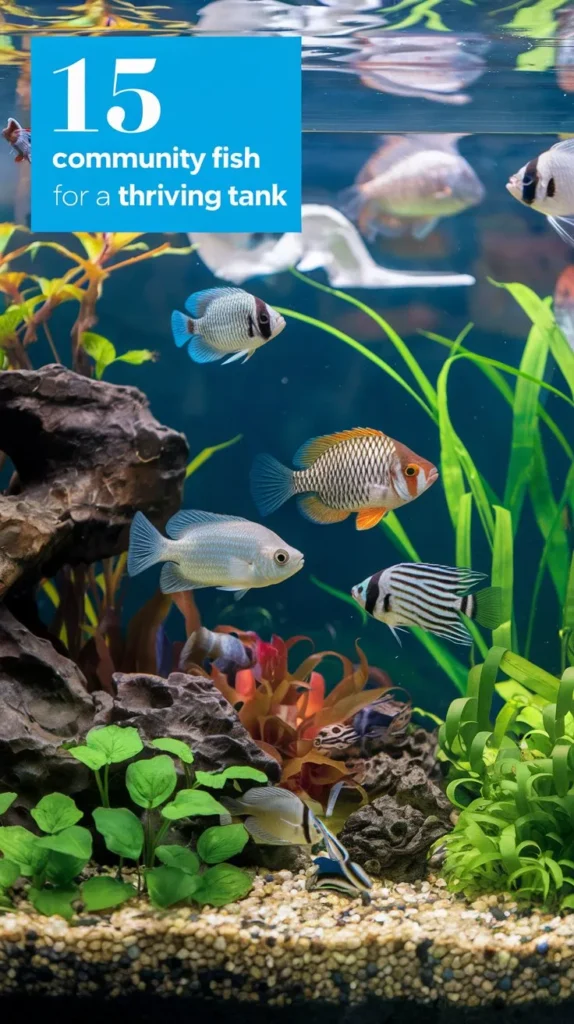
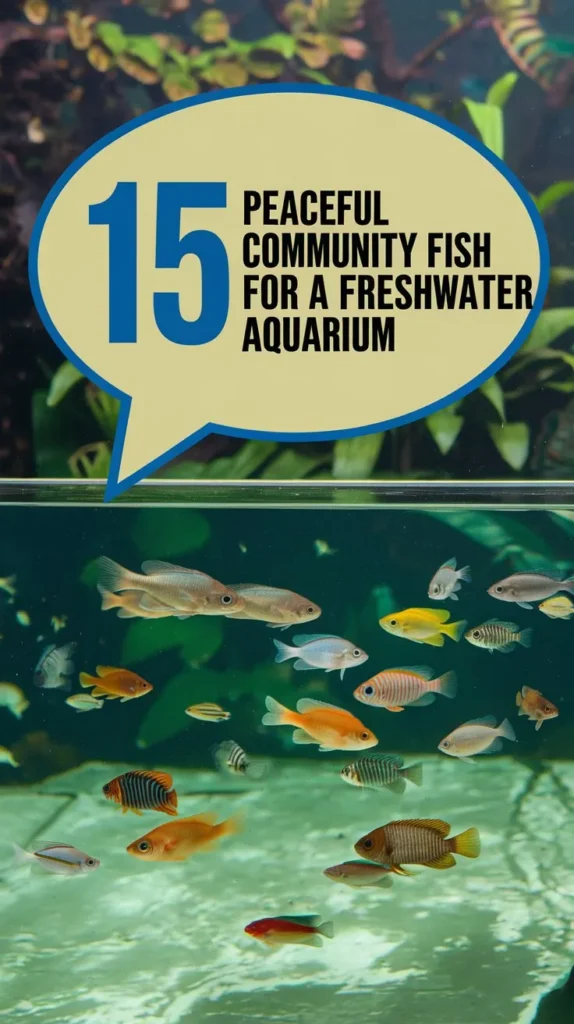
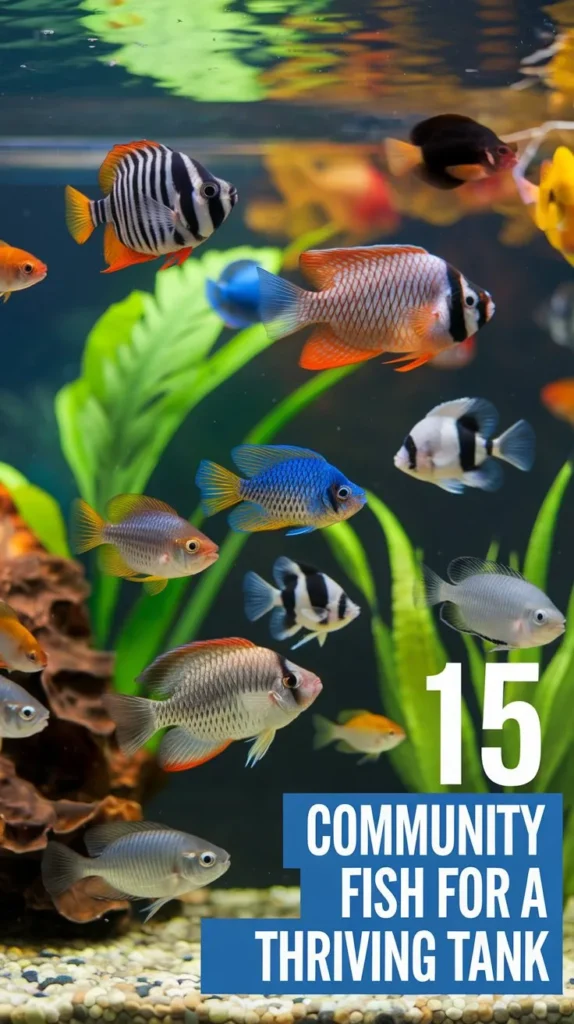



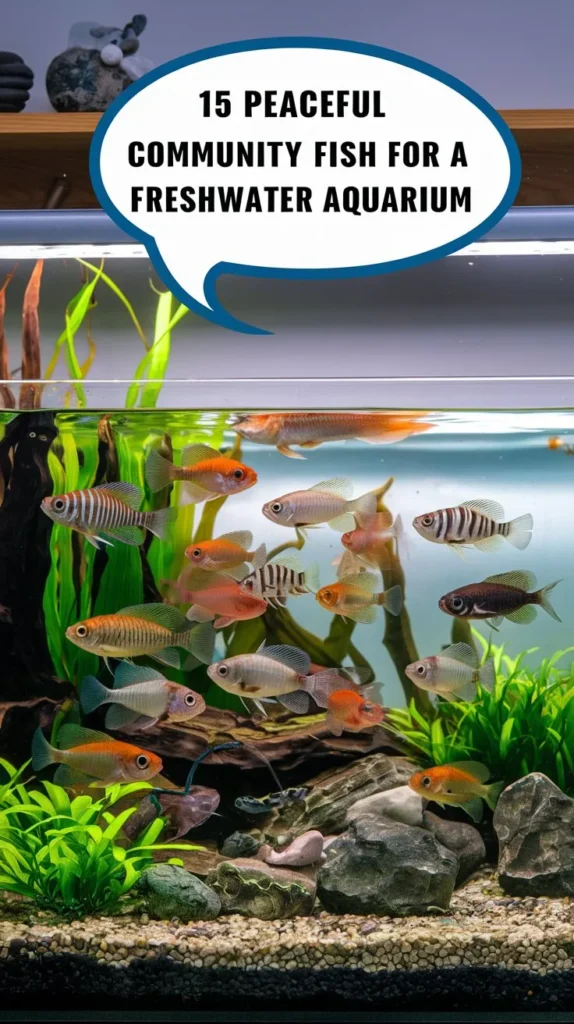
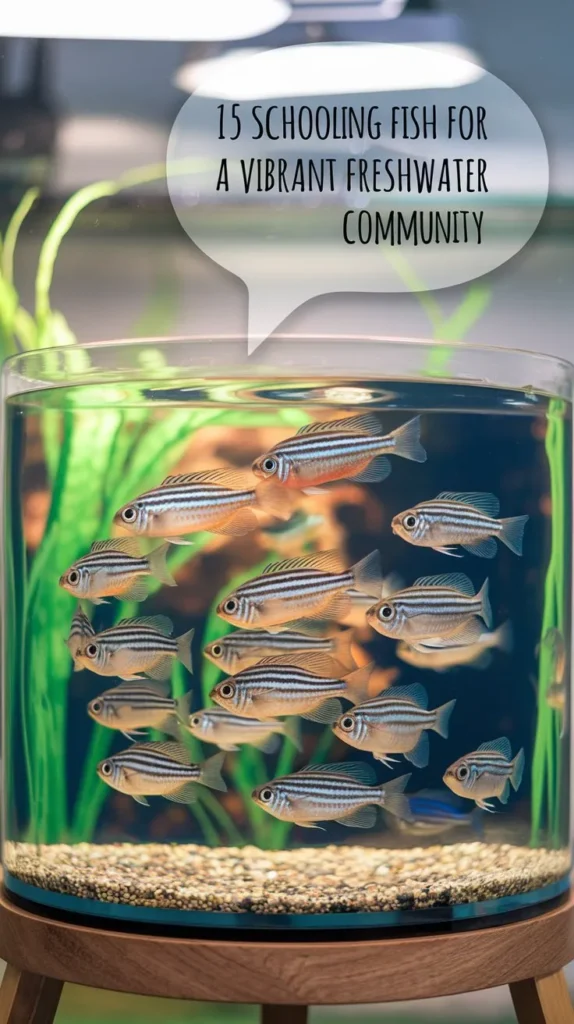

Hello, I’m Aria Cooper, the heart and soul behind Swimmy Buddies. As a devoted fish aficionado, I share my aquatic adventures and expertise to inspire your own underwater explorations. 🐠🌊

